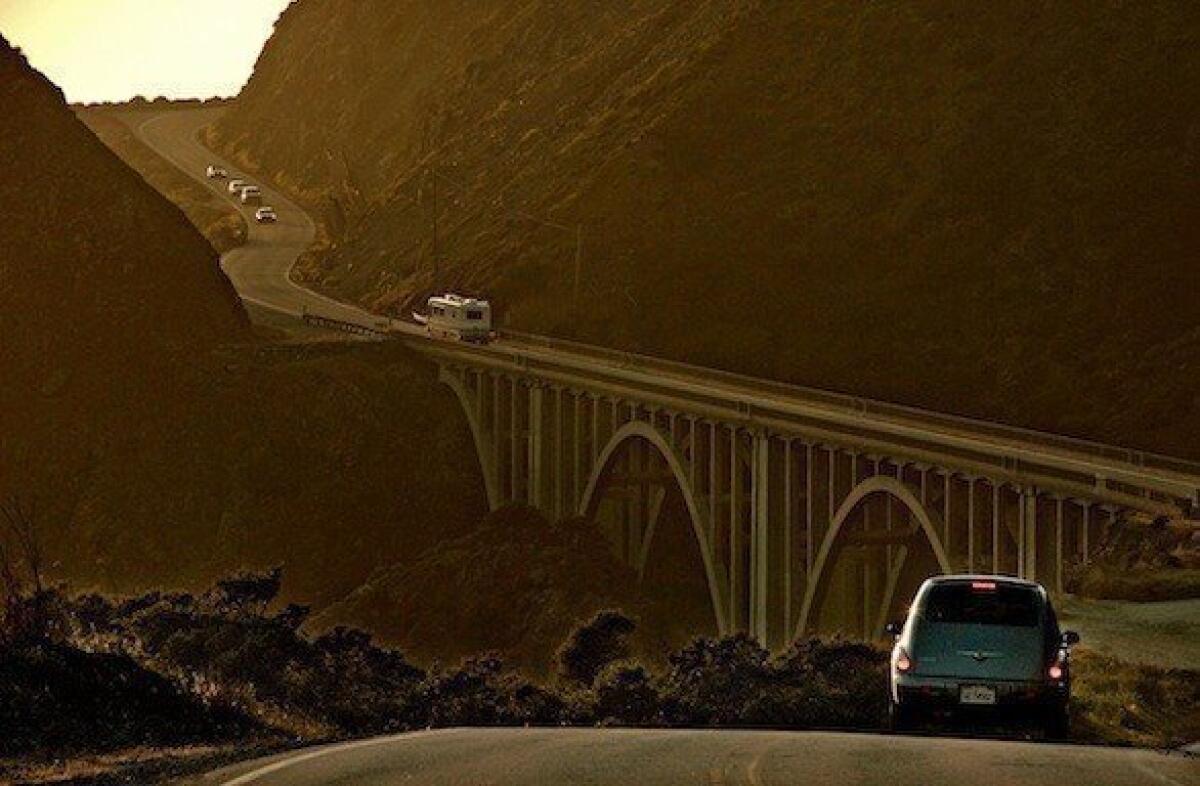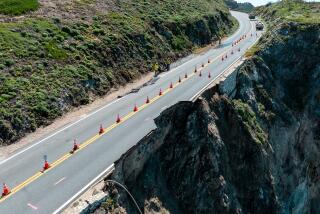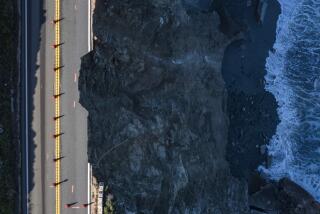‘Big Sur’: Another Kerouac novel heads to the screen

Jack Kerouac was never shy about the movies. As Joyce Johnson notes on the website “Reality Sandwich”: “In his twenties, Kerouac sporadically supported himself by synopsizing scripts for film studios and tried his own hand at screenwriting. He wrote a Christmas tearjerker that he unsuccessfully tried to sell.”
As early as 1957, Warner Bros. was offering six figures to develop “On the Road”; given the problems with Walter Salle’s recent adaptation, perhaps it’s for the best that the deal fell through. Over the years, Kerouac’s Hollywood dreams have never been reciprocated: Just think of the 1960 movie “The Subterraneans,” or “Heart Beat” (1980), based on the book by Carolyn Cassady.
Indeed, the only successful (or authentic) Kerouac films are “Pull My Daisy” — his 1959 improvised collaboration with Robert Frank, featuring Allen Ginsberg and Gregory Corso, with narration by the author — and the 2008 documentary “One Fast Move or I’m Gone,” which traces the story behind his 1962 novel “Big Sur.”
Now, “Big Sur” itself is coming to the screen, in an adaptation directed by Michael Polish and starring Jean-Marc Barr; it premieres at the Sundance Film Festival in Utah later this month.
Here’s the first trailer from the movie:
“Big Sur” is one of my favorite Kerouac novels: a bleak, embittered look at the underside of fame. Taking place largely at the Bixby Canyon cabin of Lawrence Ferlinghetti (called Lorenzo Monsanto in the book), it traces the slow dissolution of Jack Duluoz, Kerouac’s fictional alter ego, as he succumbs to alcoholism and despair.
“Dawn is most horrible of all,” Kerouac writes late in the novel, “with the owls suddenly calling back and forth in the misty moon haunt — And even worse than dawn is morning, the bright sun only GLARING in on my pain, making it all brighter, hotter, more maddening, more nervewracking — I even go roaming up and down the valley in the bright Sunday morning sunshine with bag under arm looking hopelessly for some spot to sleep in — As soon as I find a spot of grass by the path I realize I cant lie down there because the tourists might walk by and see me — As soon as I find a glade near the creek I realize it’s too sinister there, like Hemingway’s darker part of the swamp where ‘the fishing would be more tragic’ somehow — All the haunts and glades having certain special evil forces concentrated there and driving me away — So haunted I go wandering up and down the canyon crying with that bag under my arm: ‘What on earth’s happened to me? and how can earth be like that?’”
I don’t know how the movie handles Duluoz’s (or Kerouac’s) breakdown, but the trailer leaves me with some doubts. In the first place, the sweeping Big Sur vistas, the redwood forests, seem at odds with the claustrophobia of the novel, its sense that even here, there is no escaping the desolation of the universe.
Yet even more, the film appears to have discarded the idea of “Big Sur” as a work of fiction, instead portraying its characters — Ferlinghetti, Michael McClure, Neal Cassady — by their real names. That’s understandable, but it’s also unfortunate, the kind of misreading (hagiography?) that has obscured Kerouac’s intentions, and achievement, for more than 50 years.
ALSO:
‘On the Road’ toward mortality: A critic ponders Jack Kerouac
Critic’s Notebook: ‘Gatsby,’ ‘Gatz’ and the fallacy of adaptation
What ho, Jeeves! Another PG Wodehouse character comes to UK TV
More to Read
Sign up for our Book Club newsletter
Get the latest news, events and more from the Los Angeles Times Book Club, and help us get L.A. reading and talking.
You may occasionally receive promotional content from the Los Angeles Times.







